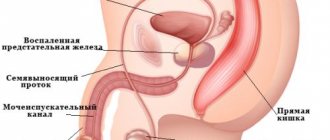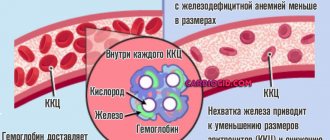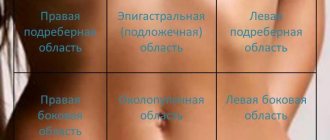Sharp pain in the eye can frighten a person, because the visual system is one of the most important, with the help of which the world around us is perceived. A person receives more than 90% of information about the external environment through vision.
Acute pain in the eye may be the primary sign of serious changes - inflammation, injury, disease. After examination and determination of the type of illness, appropriate treatment is prescribed.
Self-medication is not recommended, as this can give rise to the development of irreversible consequences. In case of acute pain, it is advisable to immediately consult an ophthalmologist.
Sometimes the eyes can sting even when there is a change in atmospheric pressure, strong wind, or heating or cooling of the eyeball. This is not a symptom of any disease.
Kinds
Pain manifests itself in several ways:
- Chronically the eye hurts inside, deep.
- It is painful to move the eye muscles, which indicates their overwork.
- The eye hurts when pressed from above - this means that the internal system of the organ of vision is affected.
- Only one eye hurts, even at complete rest. This is where injury or foreign body penetration is likely.
- Stitching pain from the inside occurs from muscle fatigue, nervous stress, injuries, and the diseases listed below.
- Pressive - usually accompanies headache.
- Cutting - appears when the eye tissue is damaged.
Additional symptoms
The manifestations that accompany sharp cutting pain depend on the cause that provoked them. The patient may develop the following additional symptoms:
- decreased visual acuity;
- dry eye syndrome;
- increased lacrimation;
- pronounced redness of the conjunctiva;
- photosensitivity;
- severe swelling of the eyelids;
- headaches and dizziness;
- the formation of neoplasms in the corner of the organ of vision or in the eyelid area.
Cutting pain can be complemented by a general deterioration of the condition, that is, attacks of nausea, drowsiness and irritability appear. In a situation where the organ of vision pricks like a needle, and such manifestations are repeated once, there is no reason to worry. If such discomfort occurs systematically, the patient should seek advice from a specialist as soon as possible.
Why do my eyes hurt?
To determine the causes and symptoms, look at the nature of the pain from inside the eyelid, and then determine whether there is an infection, a chronic disease, or the result of an external influence.
Herpes
As a rule, the virus is introduced by dirty hands or by using someone else's towel. You can catch the disease a second time if your immune system is weakened. The patient not only has pain from the inside when moving, but also vision and light sensitivity deteriorate, and there is a feeling of sand in the eyes.
Conjunctivitis
Inflammation of the conjunctiva can be of a bacterial, allergic, or viral nature.
When microorganisms enter the eye, pain begins in the eye from the inside, as if it were shooting. The inner surface of the eyeball is very fragile, as it contains many nerve endings. Therefore, even with a slight movement of the eyelids and pupils, discomfort and unpleasant sensations occur.
The infectious disease begins with itching, then the eye becomes very watery due to inflammation of the lacrimal canal, the eyelids swell, and the whites turn red. If left untreated, pus may be released. The eyelid can hurt very sharply from the inside.
When the disease becomes chronic, itching and irritation from the inside are constantly present.
Glaucoma
Glaucoma is characterized by increased eye pressure due to impaired outflow of intraocular fluid or increased production of it. Pressing pain in the eye from the inside is combined with blurred vision and the appearance of rainbow circles. Swelling of the eyelids occurs, one pupil dilates, and the person sees worse.
Symptoms may appear as an acute attack or an exacerbation of a chronic disease. Sometimes glaucoma is mistakenly mistaken for migraine, headache, or hypertension.
Cataract
Complete or partial clouding of the lens (cataract) develops gradually, initially without pain. When the organ of vision ceases to perceive light rays, the following are observed:
- blurred vision;
- glare, flashes;
- poor color perception;
- myopia.
Barley (furuncle)
When barley appears on the eyelid, inflammation begins, affecting the eyelid tissue. The eye hurts from the inside, swells, turns red. After 2-3 days, the tubercle in the middle softens and opens.
Chalazion
A chalazion is a blockage of the sebaceous glands, causing pain in the eye and swelling on the outside or inside of the eyelid. The unpleasant feeling increases when blinking. Other symptoms of the disease (besides pain) are swelling of the eyelid, irritation of the eye membranes, and sometimes suppuration.
In addition, read about what other balls can be on the eyelid and eye - read here.
Corneal erosion
If this area is damaged, the pain will be severe. There is pulsation, profuse lacrimation, and intolerance to light.
Acute dacryoadenitis
Inflammation of the lacrimal gland that occurs after common infectious diseases (measles, sore throat, flu). It causes pain on the outside of the eye, redness, and swelling of the upper third of the eyelid.
Neuritis
Inflammation or damage to the optic nerve. It is characterized by blurred vision and pain in the orbit, fever, nausea, headache, and poor color vision. Symptoms worsen when moving the eyeballs.
Uveitis
Inflammation of the uveitis (uveitis) is caused by slow blood flow in the uveal tract. As the disease progresses, vision deteriorates, redness, pain, and light intolerance occur. At the extreme stage, the patient may become completely blind.
Blepharitis
Inflammation of the edge of the eyelid with blurred vision, pain, itching, burning of the eye is called blepharitis. There are often no real changes inside the organ, but in fact the infection is very dangerous.
Symptoms include rapid fatigue, severe irritability from wind and light, redness of the eyelids, blurred vision with a tear film appearing.
Dry eye syndrome
Lack of quantity and quality of tear fluid leads to poor moisture content of the corneal surface. Dry eye syndrome is accompanied by a burning sensation, pain from inside the eyelids, a feeling that sand has entered, photophobia, and fatigue during work.
Symptoms are most pronounced in the evening or when in a dry, dirty, dusty place.
Papilloedema
This is the name for swelling of the optic disc due to increased intracranial pressure. It can last from several hours to weeks.
If a person sneezes and coughs, the symptoms worsen: the pain increases, the images before the eyes blur and double, and the heaviness in the head increases. It becomes a little easier in a horizontal position.
Keratitis
Inflammation of the cornea that occurs due to infection entering it is called keratitis. Accompanied by pain, intolerance to light, redness, tearing, and a feeling that a foreign object has entered the eye.
If the infection is caused by a fungus and the condition worsens, a corneal transplant is used.
Eye pain in children
Unpleasant sensations in a child can arise for the same reasons as in an adult. But children's organs of vision are more sensitive from the inside to some diseases and external influences.
If your baby's eye hurts from the inside, he may have:
- Myopia or farsightedness.
- Astigmatism.
- Microtrauma.
Eye pain from the inside at an early age is possible even with slight irritation.
What to do
If your eyes hurt, plan your daily routine so that your vision organs have enough rest, take regular breaks, and do simple preventive exercises.
I reduce discomfort with courses of vitamins and moisturizing drops, which should be used during increased stress, while sitting at the computer.
If a foreign body gets in, wash the mucous membranes with saline, or better yet, consult a doctor.
If the discomfort is severe, you can make a compress with tea leaves or chamomile, but increased friction is contraindicated - this will only injure the eye, cause infection, and cause the development of complications.
Be sure to exclude the presence of serious local, systemic pathologies with severe regular pain - they can be unsafe for overall health and lead to blindness.
Actions should be taken taking into account the cause of pain:
- If you are tired, watched TV for a long time, worked at the computer, give your eyes a rest. Special exercises, compresses, and wiping with ice speed up recovery. Pieces of ice for the procedure are wrapped in gauze or cloth, compresses are applied for about 7 minutes. Tea and herbal decoctions relieve fatigue well.
- If there are eye diseases, specific treatment is needed, since without it the symptoms will not go away. You should not select medications for yourself, following recommendations on forums - you cannot make an accurate diagnosis, so the drops will be useless, if not even harmful. If you miss the symptoms, diagnosis will be difficult in the future.
- With conjunctivitis and styes, the eyes always hurt severely. You need to follow your doctor's recommendations to eliminate the cause of the pain. Over time, the acute symptoms will subside and you will feel much better. Washing with herbal decoctions, tea leaves, and saline helps a lot. If symptoms last for about a week or longer, and there is practically no relief, you are doing something wrong - consult a doctor.
- Foreign objects in the eyes are a common cause of pain. Rinse with water and remove the foreign element. Do not scratch the affected eye to avoid infection. If you cannot easily remove the foreign object, consult a doctor. To eliminate a speck, blink long and often until it comes out.
Next, we will look at all the ways to treat eye pain.
Homeopathy
Homeopathic topical remedies are a good way to forget about eye pain. Main drugs:
- Colocynth - eliminates burning sensation, very severe pain, feeling of pressure, aching symptoms, evening pain. I use drops for dry eye syndrome, inflammation, and ENT pathologies.
- Angustura vera is an effective remedy for conjunctivitis, which is usually accompanied by severe pain in the eyes, fog, and dry mucous membranes.
- Berberes is a homeopathic remedy for wandering pain, relieves redness and burning sensation in the organs of vision.
- Cannabis sativa - drops are prescribed for aching pain, cataracts, spasms of the eyeballs, clouding of the cornea, difficulty opening the eyes.
- Lycopodium is a remedy for catarrh, other eyelid lesions, photophobia, lacrimation, and glaucoma.
- Apis - drops prescribed for blepharitis. They relieve pain, redness, swelling, burning, and are effective in the treatment of purulent discharge.
- Euphrasia is an excellent remedy for various eye inflammations. Thanks to its natural composition, it can be used with virtually no restrictions.
- Grindelia robusta is a remedy for conjunctivitis, iritis, severe pain in the eyes, aggravated by walking.
- Witch hazel virginiana is an anti-inflammatory agent, relieves pain, eliminates conjunctival hyperemia.
Conventional medications are prescribed only by a doctor, taking into account the cause of the development of the pathology and the nature of its course.
If you work on a computer
The human visual system is designed to withstand certain loads, and constantly sitting in front of a computer monitor is not one of them. To prevent your eyes from becoming overtired, follow a work and rest schedule.
The problem with a TV or computer for the eyes is that the screen reflects glare - it is because of them that the eyes are overstrained. While working at a PC, reading blinks occur several times less frequently than they should, and the eyeball dries out.
Symptoms are burning, stinging, itching, sand, pain in the forehead and eyes. The organs of vision become inflamed, tired, and lacrimation worsens.
Recommendations:
- Try to blink more often, buy special moisturizing drops and just drink more.
- Do gymnastics, take breaks during long work.
- In your free time, do something other than sit on your phone, tablet, or read small text.
- Adjust the brightness of the monitor - it should correspond to the lighting in the room. Wipe away dust, as its layer on the screen puts additional unnecessary stress on your eyes.
The simplest gymnastics will be enough. Look in different directions - abruptly changing the position of your eyes or moving them smoothly. It is recommended to perform the appropriate movements with the eyelids closed and then open.
Draw circles, figure eights and infinity signs - this is a very simple and yet effective workout. You can simply blink frequently for a couple of minutes, close your eyes sharply and open your eyes wide. In the evening, close your eyelids and massage them lightly with your fingers.
Folk remedies
Folk remedies also help relieve pain. In order not to harm yourself, experiment with them carefully - there are not only neutral options like chamomile decoction for compresses and rinses, but also quite aggressive agents.
Popular recipes:
- Infusion of onion and honey. A spoonful of fresh onion juice is mixed with honey in equal proportions, left for a day and used to lubricate the eyes. Keep the compress for no more than 5 minutes, then rinse with running water.
- Cut the skin off the cucumbers or cut the root vegetable into circles, soak in clean water with a pinch of soda. Apply pieces of the vegetable to your eyes for 15 minutes. This is a good remedy for severe tension.
- Cilantro - wash the herb, chop finely, mix with honey until a paste forms and apply to your eyes for 10 minutes, then rinse.
Causes not related to disease
Pain from the inside of the eyes can occur due to:
- Inflammation of the eye tissues from the inside due to sinus infections.
- Overvoltage from systematic work at the monitor. During the day, pain from the inside may not bother you, but in the evening the symptom worsens very much.
- Incorrectly selected optics for vision correction.
- Migraine.
- Injuries are also accompanied by swelling and redness of the conjunctiva from the inside.
- Penetration of a foreign body.
- Pinched cervical nerves due to osteochondrosis.
- Chemical, temperature or light burns. The pain begins a few hours after the incident.
Elena Malysheva will tell you about three common causes of eye pain:
Treatment for eye pain
Important
There are many reasons for pain in the eyes. There is no point in purposefully combating eye pain until the true cause of this symptom is found and eliminated.
Pain as a symptom will disappear during treatment of the underlying disease:
- In case of eye pain caused by prolonged work at the computer, it is necessary to limit the time spent on equipment, do eye exercises, and also use moisturizing eye drops;
For eye pain caused by inflammatory diseases of the eye, local antibacterial, antiviral and antiseptic agents are prescribed;
- For eye pain caused by glaucoma, medications that reduce intraocular pressure are prescribed;
- For eye pain caused by migraine, anti-migraine drugs are prescribed, as well as NSAIDs;
- For eye pain provoked by trigeminal neuralgia, the patient is prescribed anticonvulsants, antispasmodics and muscle relaxants;
- For eye pain caused by sinusitis, antibacterial and antihistamines and vasoconstrictor nasal drops are prescribed.
If the pain is caused by an eye injury, you need to do the following:
- Rinse eyes with running water;
- If the foreign body is located superficially, try to remove it from the eye. In case of penetrating wounds, you should not try to remove the foreign body from the eye yourself;
- To disinfect, drop one drop of sulfacyl, albucid or gentamicin into both eyes;
- Apply a sterile bandage to the affected eye. For penetrating wounds, bandages are applied to both eyes.
- Go to the first aid station immediately.
Valeria Grigorova, doctor, medical columnist
15, total, today
( 206 votes, average: 4.70 out of 5)
Boil on the eye: treatment
Aniridia – absence of the iris
Related Posts
What to do if your eye hurts from the inside
It will not be possible to independently eliminate unpleasant sensations from within the eyelid without knowing their nature. You can only take emergency measures before going to the ophthalmologist.
- First, instill pain-relieving eye drops (Indocollir, Alcain, Naklof), after reading the instructions, which indicate the dosage, adverse reactions, and contraindications.
- If you don’t have the listed medications with you, apply a compress of chamomile infusion or tea bags for 15–20 minutes.
- After the examination, the doctor prescribes medications. Usually these are drops with an antibiotic: “Floxal”, “Albucid”, “Tobrex”; or antiviral - “Timalin”, “Taurine-Dia”, “Derinat”.
- For bacterial diseases, ointments can also be prescribed: Erythromycin, Tobrex, Bonafton.
What to do if a child’s eye hurts? Drug therapy at a young age is acceptable, but you need to be more attentive to the instructions of the drugs. For example, Zovirax ointment is safe for sensitive babies, but Tobrex is not.
Principles of treatment
After diagnosing the disease, the necessary treatment is prescribed.
Main methods of treatment:
- Instillation of medications into the eyes, ointments and lotions on the eyelids, oral use of antibiotics, antibacterial and antiviral drugs, antihistamines.
- When diagnosing cataracts, glaucoma and some other diseases, surgical intervention is required to remove them. Laser removal of affected cells is often used during operations.
- Traditional medicine is used in combination with traditional methods of treatment. These are various decoctions (chamomile, plantain, aloe, algae) to relieve inflammation, fatigue and redness of the eyes, swelling of the eyelids, eye applications and compresses from medicinal clay, lotions from a decoction of celandine with honey, rose hips petals, raspberry flowers, strong tea leaves. Pure honey diluted in water (proportion 1:2) is very useful; it relieves pain from keratitis, conjunctivitis, corneal ulcers, glaucoma and cataracts.
Chamomile decoction is a universal eye antiseptic.
Preventive measures
To prevent your eye from starting to hurt from the inside, follow these simple rules:
- Maintain personal hygiene and teach this to children.
- Support immunity with vitamins and microelements by taking vitamin complexes.
- Treat infections of any organs (respiratory, oral cavity) in a timely manner, since the pathogen can spread to the visual system.
- If your vision deteriorates, do not put off visiting an ophthalmologist and choose corrective optics.
- Avoid visual fatigue by reading fine print in a book or on a monitor for a long time.
- Take breaks from work and perform special visual gymnastics.
- Apply clay applications and wash them off with tea leaves.
If the eye hurts from the inside, this may be a sign of a serious (and sometimes chronic) diagnosis that will lead to complications, possibly loss of vision. So diagnosis and treatment must be timely.
Your friends should also learn what to do when their eyes hurt from the inside. Share information with them on social networks and leave your comments with useful tips. Tearing of the eyes causes and treatment, read on our website.
Methods to alleviate the condition
There are a large number of methods that will alleviate the patient’s condition with pain in the eyes. The doctor may prescribe medication, the use of folk and homeopathic remedies. The greatest effect is achieved by using ophthalmic ointments and drops.
Medicines
To eliminate pain in the eyes, it is necessary to influence the cause of the pathology. To alleviate the patient's condition, it is recommended to use ointments and drops. The use of any medicine must be agreed with a specialist.
Ointments
The use of ointment is prescribed if the pain occurs against the background of an inflammatory disease. Effective drugs:
- tetracycline ointment;
- Hydrocortisone;
- Demazol.
Tetracycline ointment is used to treat infectious lesions. The active component of the medicine eliminates pain, tearing and redness. The ointment is also used for burns and other injuries to the cornea.
This is a broad-spectrum antibiotic. Its active components suppress protein production in the cells of the causative agent of the pathological condition. Indications for use:
- trachoma;
- blepharitis;
- conjunctivitis.
The medicine should be placed behind the lower eyelid 3-5 times a day. In most cases, the eye ointment is well tolerated. Sometimes there is gastrointestinal upset, nausea, and vomiting. Tetracycline ointment will increase the sensitivity of the skin to sunlight. If signs of hypersensitivity to the drug occur, you should stop using the drug. The doctor must choose a non-tetracycline antibiotic.
No less effective is Hydrocortisone ointment. It relieves inflammation and redness. The medicine is used for allergic eye lesions, inflammatory processes, thermal or chemical burns. Hydrocortisone is recommended for use after surgery on eye tissue.
The active substance in Hydrocortisone is hydrocortisone acetate. Auxiliary components are petroleum jelly and methylparaben. This hormonal drug is prescribed for the treatment of:
- allergic eye lesions;
- inflammatory processes in the organs of vision;
- thermal and chemical burns of the cornea.
The use of Hydrocortisone should be avoided in case of individual intolerance to the components, viral and purulent eye lesions. Contraindications include violation of the integrity of the eye membrane and children under 18 years of age.
Demazol relieves inflammation from the eyelids. Active components help fight itching, pain and swelling. The drug is prescribed for parasitic and bacterial infections.
The medicine is not used if the patient is hypersensitive to the components. This product should be applied to the edges of the lower and upper eyelids using a cotton swab. The duration of treatment is determined individually.
For pain in the eyes and other undesirable manifestations, 1% erythromycin ointment can be prescribed. It must be placed behind the lower eyelid. In case of acute discomfort after sleep, you need to apply a bandage to the eye.
Drops
To eliminate pain and dryness in the eyes, drops are prescribed.
Effective drugs:
- Natural tear. The medicine is used to moisturize the mucous membrane. The therapeutic effect lasts for 1.5 hours. These drops are suitable for patients who wear lenses. The medicine is not used in the presence of hypersensitivity to the components and for the treatment of children.
- Vidisik. Active components moisturize the conjunctiva. Drops are not prescribed to patients under 16 years of age. Pregnant and breastfeeding women should use it with caution. You can drive vehicles or perform work that requires high concentration only 15 minutes after using the medicine. Vidisik is buried in the conjunctival sac. The duration of treatment is from 3 to 5 days.
- Lincontin. The drug will be effective for visual strain. Can be used to prevent dryness and pain in the eyes. The medicine is compatible with all types of contact lenses. Drops should be used several times a day.
- Diklo-F . It is used to treat conjunctivitis of non-infectious origin or after ophthalmic surgery. Drops are not prescribed to patients with hypersensitivity to diclofenac or acetylsalicylic acid. Diklo-F is instilled directly into the conjunctival sac, 1 drop every 6-8 hours. The duration of treatment is from 7 days to two weeks.
- Tuafon. Drops are used when the process of tear fluid production is disrupted. The medicine is used for corneal injuries, cataracts and primary open-angle glaucoma. The active components stimulate the restoration process in the tissues of the eye. Tuafon is not prescribed for patients under 18 years of age or with a predisposition to an allergic reaction.
- Voltaren-ofta. Such drops allow you to normalize photosensitivity. They can be used after eye surgery. The dosage depends on the disease. If used incorrectly, side effects may occur. Itching, blurred vision and irritation of the eyes occur. In rare cases, pinpoint lesions of the cornea are observed. The allergic reaction manifests itself through urticaria, rash and conjunctival hyperemia.
What does increased tearfulness indicate?
Pain in the eyes and tearing can be caused by the following reasons:
- Exposure to adverse weather conditions. If you spend a long time in the wind, tears may appear in your eyes. Discomfort also appears with sudden temperature fluctuations. Pain in the eyes that appears under the influence of unfavorable natural conditions can be considered a normal reaction of the body;
- Penetration of a foreign body into the eye. Through the tear fluid released in large quantities, the body tries to get rid of the foreign object;
- Allergy. Exposure to various allergens (cat hair, pollen) provokes profuse lacrimation and a burning sensation;
- Presence of infectious diseases. When coughing, harmful organisms penetrate the mucous membrane of the eyes, which leads to profuse lacrimation;
- Eye strain due to prolonged work in front of a computer monitor;
- Age-related changes;
- The presence of autoimmune pathologies.
Prevention
Preventive measures are aimed at protecting the eyes from negative external and internal factors. The following recommendations must be followed:
- You can only wear properly fitted lenses. They need to be changed promptly and their hygiene monitored.
- Before working with chemicals, you must wear safety glasses.
- It is prohibited to use expired or low-quality decorative cosmetics for the eyes.
- It is necessary to minimize contact with all possible allergens.
Which doctor should I contact?
An ophthalmologist is involved in the diagnosis, treatment of eye diseases, and the selection of lenses and glasses, if necessary. If pain in the organs of vision is caused by pathologies of internal organs, you will need to consult an infectious disease specialist, neurologist, ENT specialist, or surgeon.
If you have eye pain, consult an ophthalmologist
Important!
Sharp pain, severe redness, inability to open the eyes are a consequence of a burn to the cornea during welding, sun rays; in case of serious injury, long-term treatment will be required; vision deteriorates due to tissue necrosis.
If accompanied by a burning sensation
When the pain is accompanied by a feeling as if sand had penetrated into the eyes, then in 30% of cases it can be said that there is conjunctivitis. In addition to pain, photophobia, purulent discharge, lacrimation, increased temperature and hyperemia of the eyelids occur.
The following reasons can affect the development of pain and burning:
- Dry eye syndrome . There are changes in the properties of the tear film, as a result of which it is not able to function fully. The patient feels pain, irritation from bright lighting and the inability to strain his vision for a long time. The development of dry eye can be influenced by factors such as wearing contact lenses, increased visual load, and being in a room with dry air. But this information will help you understand how to properly use drops for dry eyes.
- Diseases of the anterior parts of the eye - blepharitis, conjunctivitis and keratoconjunctivitis.
- Taking medications from the group of antihistamines, medications to lower blood pressure, antidepressants.
- Systemic diseases - rheumatoid arthritis, systemic lupus erythematosus, hyperthyroidism. In addition to cutting and burning, the patient experiences severe pain.
Causes of acute pain
If a patient’s eyes hurt, cut or burn, then when determining the causes of this condition, the doctor first finds out the duration, intensity and nature of the pain syndrome. For example, when painful sensations increase gradually, doctors suspect the presence of an ophthalmological disease.
- Inflammatory processes of an infectious nature (conjunctivitis, keratitis, iridocyclitis) are caused by pathogenic microbes that easily penetrate the visual organs, both from the external and internal environment. Inflammation is accompanied by acute pain, lacrimation, and redness of the sclera. Other symptoms may also occur: general weakness, increased body temperature, and fatigue.
In severe cases, purulent secretion is released from the eyes. Because of it, the eyelids stick together after waking up. With such symptoms, the patient should consult a doctor as soon as possible. You should not rub, scratch, or press on the eyes, as this can worsen the situation.
- A stye occurs when the cilia become infected at their base. The cause of the problem is staphylococcus, which leads to inflammation of the eyelid, swelling, and stabbing pain.
- Glaucoma is a serious condition that causes constant pain. If the disease is not treated, it leads to complete blindness. In glaucoma, increased eye pressure is noted.
- Sinusitis causes nasal congestion. With such an illness, not only the eyes hurt, but also the bridge of the nose, head, and wings of the nose.
- Trigeminal neuralgia , in which several nerve branches are compressed and irritated, causes severe discomfort in the eye area. Usually the disorder occurs due to hypothermia, infections, viruses, herpes, and injuries.
How to relieve eye pain yourself
To prevent the occurrence of various types of eye diseases and normalize eye function, current ophthalmology offers various medications to improve vision. Traditional medicine also has a number of healing remedies. They can only be used as preventive measures.
There are many recipes for pain relief:
- Eye drops. All ingredients should be taken one teaspoon at a time. Mix mint juice, honey and water. Water must be taken from natural sources; water from a spring is perfect. You need to put three drops in your eyes every day, in the morning and at night, for ten days. After the course of treatment, the patient sees the world in new colors. If necessary, therapy can be repeated.
- A herbal compress made from cilantro will help improve vision and relieve muscle strain. You need to finely chop the cilantro and add chalk and aloe juice in equal proportions. Apply the compress at night, for a quarter of an hour on the eye area. In the morning you need to perform a therapeutic eye massage.
- An excellent preventive measure would be the following remedy: a teaspoon of onion juice should be mixed with a large spoon of honey. Let the mixture sit for a day. Lubricate your eyelids with this mixture. After this, wash your eyes with warm water.
- You can make lotions from fresh cucumbers. Pour half a glass of hot water over the cucumber peel and add a pinch of soda. Mix everything well. Apply eye lotions every day in the evening. In addition to medicinal properties, these lotions also have cosmetic value, the result of which will be smooth skin around the eyes.
- Mix one part of dill, marshmallow and horsetail seeds with two parts of chicory flowers and rose petals. Three large spoons of this mixture are poured into a glass of water, brought to a boil and allowed to cool. Apply three drops to your eyes three times a day.
Traditional medicine should not be used by people suffering from an allergic reaction to the components.
In addition to compresses, infusions and mixtures, it is necessary to pay attention to natural food products that contain vitamins and minerals. You need to eat foods such as:
- Blueberry;
- Carrot;
- Spinach;
- Liver;
- Dairy products.
Every day you need to perform eye exercises, which will help strengthen the eye muscles. It doesn't take much time.
how to instill eye drops correctly
Diagnostics
It is necessary to find out why there is pressure on the eyes from an ophthalmologist. Using a special device, intraocular pressure is measured and the result is evaluated. In addition, an ophthalmological examination is carried out aimed at studying the condition of the optic nerve.
To confirm the diagnosis, the following types of studies may be prescribed:
- MRI. Using this procedure, it is possible to determine which pathologies caused the unpleasant symptom. MRI helps identify strokes, cystic formations, tumors and hydrocephalus.
- Ultrasound. This diagnostic method determines the presence or absence of vascular damage, thrombosis and the speed of blood flow.
- CT. The procedure determines the presence of an inflammatory process affecting the bone structure of the head. In addition, CT scans can detect the presence of pathologies such as sinusitis and frontal sinusitis.
If indications are present, the ophthalmologist may refer the patient for consultation to other specialists.











